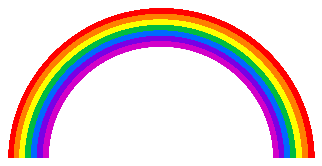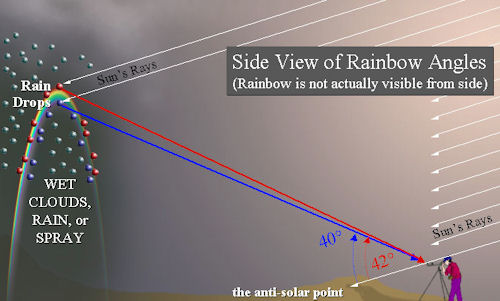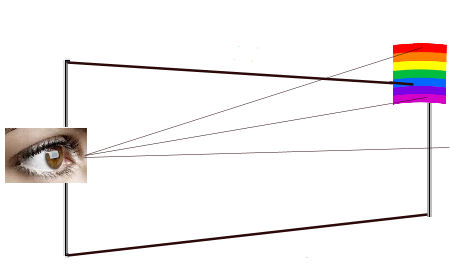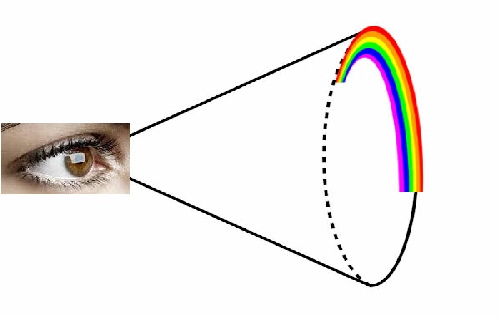










How do we see things that aren’t there? -
8 aug 2016

So why is a rainbow an arc? Or why does a rainbow bow?


If you're to see a rainbow, the sun must be behind you and there must be rain in front of you. Each rain drop splits the light into different colours and each colour leaves at its own exact angle. If we happen to have our eye at that angle we will see that colour, and only that colour, from a given rain drop.
So if we see red light from a raindrop high in the sky, the other beams from that raindrop exit at a lower angle and we don't see them. But we see red light from all the surrounding raindrops in the same way.



Lower in the sky, raindrops emitting blue light at a lower angle are in the right place for the blue light to hit our eye. So we see blue light from all the lower raindrops around that position.
Because the refracted light is only emitted over a small range of angle (42deg for red, 40deg for blue, and between these for the other colours of the rainbow) we only see the rainbow as a narrow band. While all the other raindrops are refracting light, we don't see it, as the angle is wrong for us.
But why does it appear to bow?
The above explanation shows why we only see refracted light over a small angle range. But it only deals with behaviour over a single vertical plane going through our line of vision. In fact that same behaviour occurs over all the planes rotated around our line of vision.


The angles of light that we can see form the surface of a cone with our eye at the apex. The light appears to come from the end of that cone, which is a circle.


Because the raindrops are high and the ground intersects the lower part of the circle, we generally see only the upper part of the circle, which is an arc or a RAINBOW.
